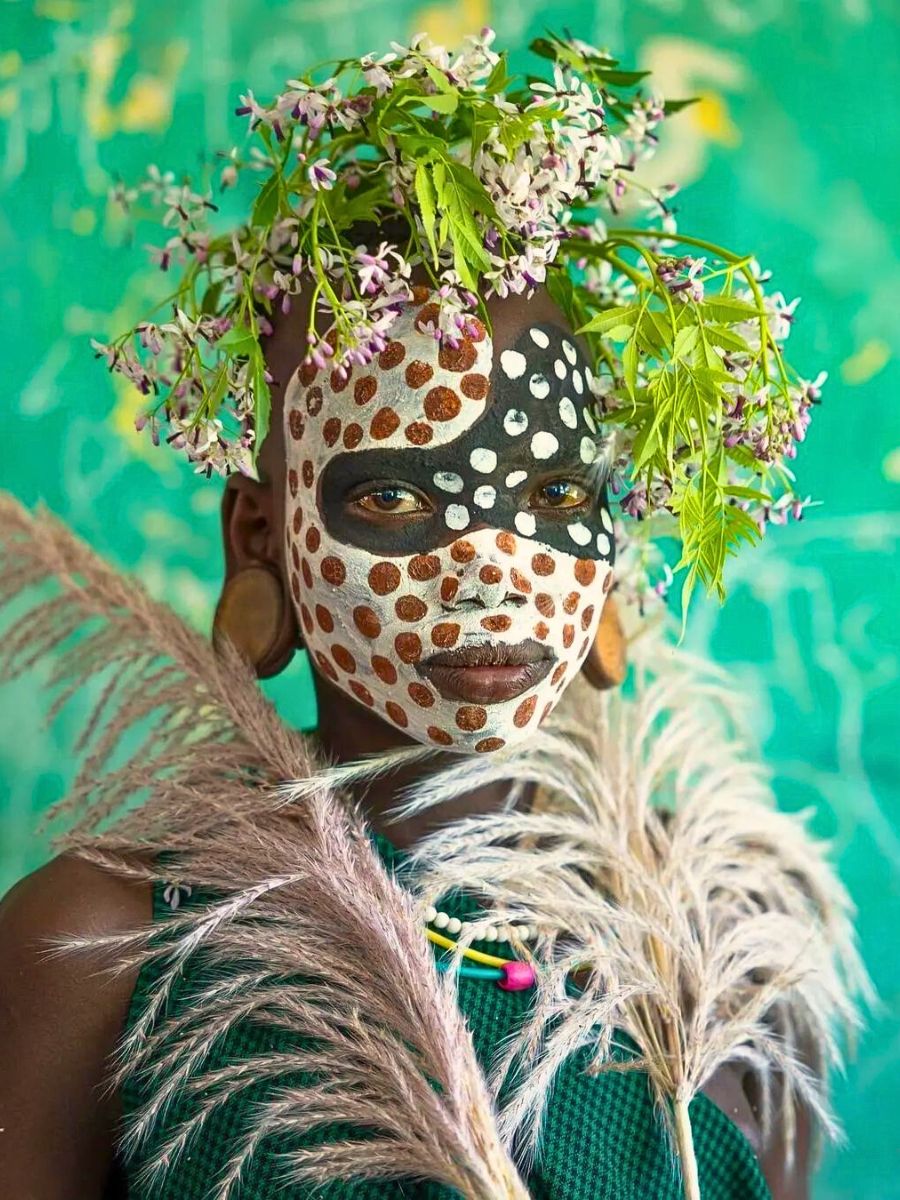Far away from the glitzy fashion runways that define the New York, London, Milan, or Paris Fashion Weeks, there exists an alternate, parallel fashion world. A fashion world wholly inspired by nature and the simple elements and materials found in the natural world. In the Omo Valley of southern Ethiopia, the Surma and Mursi people don’t have all the modern prerequisites of trendy fashion—glue guns, sewing machines, sequins, or sharpies—to accessorize with. Disconnected from the global fashion scene, these indigenous communities have instead looked to the natural world around them for sartorial inspiration. and they've found it!
Fashion Inspired by Materials Provided by Nature
Inspired by the tools and textiles provided by nature alone, these ancient Eastern African tribes have managed to create their own unique fashion sense using leaves, flowers, grasses, animal horns, and other found materials. The tribespeople craft elaborate headdresses, necklaces, bracelets, and other accessories that are truly one-of-a-kind, with an innate sense of artistry and design that easily rival and certainly influence the most avant-garde haute couture fashion.

Photo by @mc_olis_photography and @omoadvisor
Avant-Garde Fashion From Flowers, Leaves, Grass, Shells, Animal Skin, Horns...
The Surma and Mursi are a nomadic people inhabiting the southern end of Ethiopia, parts of South Sudan, and the northern part of Kenya. Without permanent architecture on which to display their fashion and creativity, they have instead, resorted to using their own bodies as canvases, adorning themselves with stunning natural floral fashions. They, also, paint their skin with vibrant mineral pigments, creating some of the most mesmerizing patterns and designs.

Photo by @omoadvisor
Their deep connection to nature and the natural world extends beyond just the materials they use. The tribespeople's fashions reflect the seasonal changes and cycles of their environment. The colors and textures of their accessories transform with the landscape, making each individual's look unique. The body accessories and spectacular avant-garde-looking headpieces are made with just twigs, flowers, leaves, grass, shells, animal skins, bones, horns, and just about any found item in their surroundings. Yet, they possess an exquisite and innate sense of form, shape, and color that makes them unique.

In a series of photographs, German-born photographer Hans Silvester is one of those who has documented this remarkable fashion tradition, capturing the ethereal floral beauty of the Surma and Mursi people. There are, of course, others like Matilde Simas, who also have explored the Omo Valley capturing these tribes' unique fashion sense in a series of photographs. Hans describes these tribespeople's creations as "a truly living art"—mobile, changeable, and endlessly inventive.

In his book, Hans talks of the indigenous people's fashion:
"They do not spend any time thinking about it. They live so close to nature that they also act naturally, and at quite an astonishing speed. They take a branch, strip it, adroitly turn it into a strong, and weave that into a crown or some other form, to be finished off with a shell as its centerpiece."
He, however, fears that this ancient practice may be under threat as modernization and tourism gradually creep in and encroach on the tribes' remote homelands.

Born in 1938, Hans Silvester has an impressive photography career behind him. he has documented everything from the ravages of deforestation in the Amazon to the lives of women in the Great Indian Desert. His portraits of the Omo Valley tribespeople and their floral fashion are yet another of his works.
The Tribes’ Body Painting Aesthetics
These indigenous tribes in Ethiopia, are also renowned for their vibrant body painting which, likewise, reflects their deep connection to nature. This practice is not merely for aesthetic purposes; it serves as a significant cultural expression that embodies their identity, traditions, and social status, just as the floral attires do; of course other than protecting them from the harshness of the often sunny weather conditions.

Cultural Significance of Body Painting
Body painting among the Surma and Mursi is an elaborate art form that utilizes natural pigments derived from local materials such as clay, charcoal, and plant extracts. The colors used in these designs often symbolize different aspects of life, including fertility, beauty, and personal achievements. For instance, bright colors may indicate a celebration or a rite of passage, while darker tones might be used in mourning rituals. These practices are deeply embedded in their cultural heritage and are often passed down through generations.

Social Identity and Expression
These indigenous nomadic tribes' body art also plays a crucial role in social identity. Each design can signify an individual's status within the tribe or their role in community events. For example, during traditional ceremonies or festivals, there are elaborate body paintings worn to showcase different elements including artistic skills and creativity. This not only enhances personal identity but also nurtures community bonding as individuals come together to celebrate their heritage.

Connection to Nature
The Mursi and Surma tribes' use of natural materials for body painting, likewise, underscores their deep relationship with the natural environment. Sourcing colors from their surroundings means they demonstrate respect for nature and its resources. This practice highlights a sustainable approach to fashion—just like in the modern world—where the tribe transforms elements of nature into decorative and wearable art.

Hans Silvester has two books featuring his stunning photographs of the Ethiopian tribes.
Feature image by @phototravel_spain, and header image by @hoare.photo.










